Trade agreement: Why India made a U-turn on free trade deals
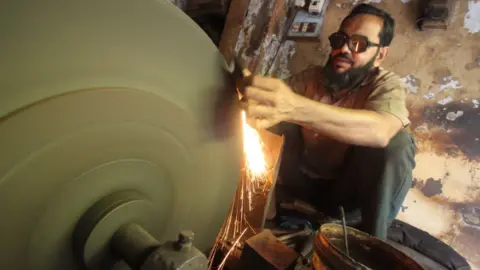 Getty Images
Getty ImagesAfter a decade of scepticism over free trade deals, India has been signing a bevy of new agreements with a number of countries to reduce trade barriers, eliminate tariffs and gain preferential access to global markets.
Earlier this year, the country brought into force a comprehensive economic partnership with the UAE and signed an ambitious trade pact with Australia, committing to reduce tariffs by 85%. Advanced negotiations are also under way to sign free trade agreements (FTAs) with the UK and the EU.
These deals are expected to cover a range of products and services from textiles to alcohol, automobiles, pharmaceuticals as well as subjects like labour movement, intellectual property enforcement and data protection.
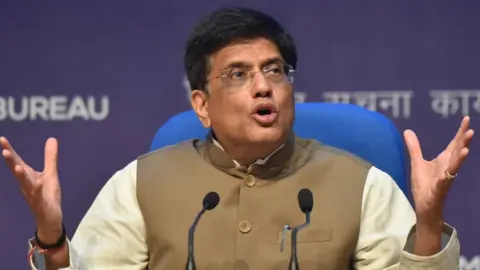 Getty Images
Getty ImagesIndian and UK officials are working "intensively" to conclude a "majority of talks on a comprehensive and balanced FTA by the end of October 2022", the UK said in a statement last week.
The re-launch of FTA negotiations with the EU after a protracted wait was reflective of a "new India which wishes to engage with the developed world as friends, from a position of fairness", India's Trade Minister Piyush Goyal said last month.
This renewed zeal marks a sharp departure from India's trepidation about trade liberalisation over much of the last decade.
In 2019, India famously pulled out of the Regional Comprehensive Economic Partnership (RCEP), touted to be the world's largest trade agreement between China and 14 other Asian countries, after being part of the negotiations for seven years.
Delhi was concerned that the agreement would reduce duties on imported goods by 80-90%, and further widen India's large trade imbalance with China, exposing domestic producers to greater foreign competition.
 Getty Images
Getty ImagesThe government's assessment of India's existing FTAs and preferential trade pacts isn't favourable either.
According to NITI Aayog, the public policy think tank of India, while bilateral trade with partner countries like Japan, South Korea and the ASEAN region increased following the signing of trade deals, imports rose more sharply than exports, leading to "unfavourable gains" to India's trade partners.
Which is why India's approach this time is to achieve a "fair and balanced" FTA with complementary economies, focused less on competition and more on collaboration, according to Mr Goyal.
But achieving this balance might be easier said than done.
In Akluj in Maharashtra state in western India, Fratelli, one of India's biggest winemakers, has been producing wine for the last 15 years.
Gaurav Sekhri, who co-founded the brand, says the company has been growing at 30-40% over the last couple of years, as Indians start to develop a taste for wine.
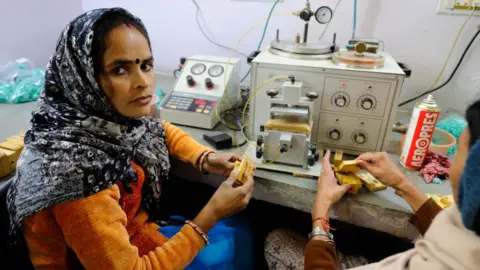 Getty Images
Getty ImagesBut as India fast-tracks free-trade negotiations with countries like the UK and the EU, he's worried about more competition from cheaper, imported brands, just as the sector is on the cusp of maturing.
Mr Sekhri expects the terms of the UK and EU deals to be similar to the FTA signed with Australia where duties on wines over $5 have been reduced from 150% to 100%, with further phased reductions over the next decade.
He says the industry needs some protection because consumers will be more inclined to choose non-Indian wines of the same cost as they are perceived to be of better quality.
"Also the life of our vineyards is lesser compared to European vineyards. And for that reason alone our costs will be higher and protection will be necessary," adds Mr Sekhri.
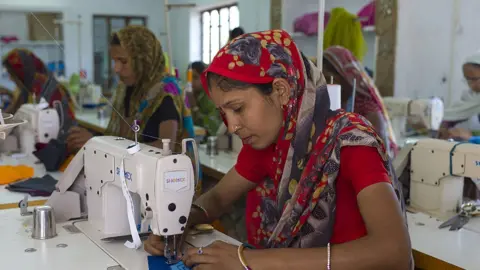 Getty Images
Getty ImagesBut opposition to trade liberalisation is muted.
Textile and apparel firms, which recorded the highest ever exports in the last financial year, are enthused by the prospect of lower tariffs on their goods.
Mumbai based Milaya Embroideries, which produces clothing for global fashion brands like Dolce and Gabbana and Emporio Armani, is currently hit by a double whammy of tariffs - while importing raw material from Europe and while exporting finished clothes back to the continent.
Apparel manufacturers have also been losing business to countries such as Vietnam which recently ratified its FTA with the EU. For them, the imperative to act is greater.
"It's much cheaper for European companies to place orders with Vietnamese vendors because they don't have to pay duties. Whereas duties are between 9% and 16% for imports from India. I think we will see a lot of demand from the customers if the duty rates are slashed," said Shashank Jain, COO of Milaya Inc.
For India and its partners, the reasons behind the renewed interest in these trade talks are as much strategic as they are economic.
India's annual merchandise exports crossing the $400bn mark in the last fiscal year - a 40% annual jump - has reduced "the hesitation around giving additional market access", said Biswajit Dhar, a professor at the Centre for Economic Studies and Planning, Jawaharlal Nehru University.
But equally, as countries like Britain look to expand supply chains towards the Indo-Pacific in a post-Brexit world, and global firms adopt a strategy in which they avoid investing only in China and diversify their businesses to alternative markets, Delhi has been presented with a rare opportunity to become globally integrated.
Amitendu Palit, a senior research fellow at the National University of Singapore, says increased collaboration between countries like India, Australia, Japan and the US reflect their growing anxiety over China's control over supply chains and its ability to disrupt them.
But experts are also concerned about the "dichotomy" between India's FTA strategy and its overall trade policy.
"(The) new-found enthusiasm for FTA seems to conflict with its trade-policy stance under the self-reliant India initiative, whose genesis is on "vocal for local", thereby promoting domestically produced goods over imported goods," researchers Surender Singh and Suvajit Banerjee recently wrote in the journal Economic and Political Weekly.
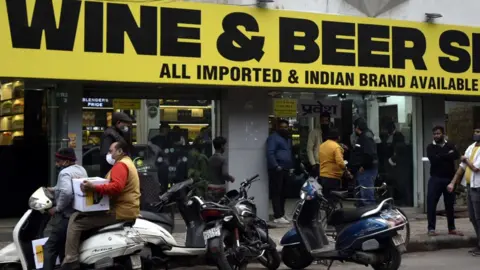 Getty Images
Getty ImagesIndia has undertaken more than 3,000 tariff increases which has affected 70% of imports, according to Arvind Subramanian, former economic adviser to the government.
This "lack of synergy" between trade policy and FTA strategy "not only weakens India's negotiating capacity, but also undermines the potential economic benefits of free trade," Mr Singh and Mr Banerjee say.
Ironing out these inconsistencies will be of essence. The timing will be key as well.
The timelines set to conclude these deals are ambitious. India can ill afford to lose the pace because by the middle of next year, the election cycle will get under way.
"Once you lose momentum, it can be very long drawn," warns Mr Dhar.

More from India:

